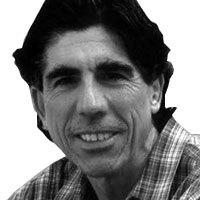For the past three decades, anyone interested in Ernest Hemingway’s correspondence has relied on Carlos Baker’s 1981 collection, Ernest Hemingway: Selected Letters, 1917-1961. Baker, the author of a 1969 biography of Hemingway, knew the writing inside and out, and the 581 letters he chose came with just the right amount of notation.
Most admirers will continue to rely on Baker’s Selected Letters, but in the future that will no longer be the definitive source for Hemingway’s correspondence. That claim will rightfully belong to the Cambridge Edition of The Letters of Ernest Hemingway.
There are more than 6,000 surviving Hemingway letters, 85 percent of which have never before published, and Cambridge University Press is bringing them together in what the editors estimate will be a 17-volume edition. It’s a massive undertaking that has been made still more difficult because Hemingway did not routinely keep copies of his letters.
Volume 1 appeared in 2011, and Volume 2 in 2013. Now Volume 3, which covers Hemingway’s life from January 1926 to April 1929 and contains 345 letters, has been published.
If Hemingway’s wishes had been heeded, we would not be reading his letters. In May 1958, three years before his death, he typed out a directive on what he wanted done with his correspondence. “To my Executors: It is my wish,” Hemingway wrote, “that none of the letters written by me during my lifetime shall be published. Accordingly, I hereby request and direct you not to publish, or consent to the publication by others, of any such letters.”
Those wishes were countermanded by his literary executor and fourth wife, Mary Hemingway. Given how much of his writing he left behind, it’s a decision many have questioned, but beyond dispute is how much light the letters shed on Hemingway’s work and on American literary history, especially during the years when his friends included James Joyce, Ezra Pound, and F. Scott Fitzgerald.
Hemingway once asked Fitzgerald if he liked writing letters. “I do,” Hemingway went on to say, “because it’s such a swell way to keep from working and yet feel you’ve done something.” He was being too modest. While his letters may have lightened the burden he felt when he was worked on his fiction, they are never sloppy. They are filled with insights into his own thinking as well as the issues of his time.
The new, third volume of the letters, meticulously edited by Rena Sanderson, Sandra Spanier, and Robert W. Trogdon, shows Hemingway at the top of his literary game and leading an increasingly complicated personal life. This is the period when The Sun Also Rises was published and A Farewell to Arms was written, and it is also when Hemingway divorced, remarried, and had a second child.
From Babe Ruth to Charles Lindbergh, there were any number of figures in the 1920s who were greater celebrities than Hemingway, but he was still living in an era in which writers could be heroes, and with his good looks and his breakthrough prose, he fulfilled the writer-hero role better than anyone else in his generation.
What comes through in the letters is Hemingway’s ability to keep his triumphs in perspective. He is happy getting good book sales and good reviews, but they don’t distract him from what he sees as the challenge of writing fiction that will stand the test of time. “But the hell of it is that I am not in competition with my contemporaries but with the clock—which keeps on ticking,” he writes in January 1926.
As his own star rises, Hemingway gives praise when he thinks it is due. “You do more and work harder and oh shit I’d get maudlin about how damned swell you are,” he tells Fitzgerald, with whom he had a love-hate relationship all his life, in January 1927.
With his family, there is a similar effort to be generous. Hemingway does not try to justify his divorce from his first wife, Hadley Richardson. In the same letter that he promises her the royalties from The Sun Also Rises, he blames himself for the end of their marriage and speaks of her as a wonderful mother to their son. “I think perhaps the luckiest thing Bumby will ever have is to have you as a mother,” he writes Hadley in November 1926. “I pray God always that he will make up to you the very great hurt that I have done you—who are the best and truest and loveliest person that I have ever known.”
With his own mother, whom he thought of as a cold parent and a poor wife, Hemingway shows his best side when it matters. When his mother struggled to make ends meet after Hemingway’s father committed suicide and left the family with a series of bad investments to sort out, he promised, “I will always fix things up—can always borrow money if I haven’t it—So don’t ever worry—but go ahead with good confidence and get things going.”
After reading the letters in Volume 3 and recalling the books he wrote in these years, it’s easy to forget that, in 1929, Hemingway was just 30 and had already completed the novels that would change the course of 20th-century fiction in America and Europe.
Hemingway, though, was confident he could improve on his early successes, and in one of the last letters in the book, he provides a coda to this period in his life when he writes Owen Wister, the author of the classic western The Virginian, “Nothing you can say would make me angry—Please always go the limit—it is only amateurs that are angered by criticism—My god all I care about is to do the thing better and I would anytime take 500 insults, 100 untruths to get one true thing.”






